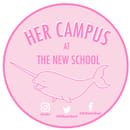At around two in the morning, on June 28th, 1969, the NYPD burst into a gay bar called Stonewall, located in the rough and sleazy area of Greenwich Village. This type of raid had happened dozens of times before—there was no real reason to expect that this one would be any different. Arrests would be made, those closeted would be outed, and life would go on in its heteronormative vein.
Then Sylvia Rivera and Marsha P. Johnson picked up a couple of bricks. And the rest, as they say, is history.
However, history doesn’t end there. In New York City today—in 2018—the adult LGBTQ+ scene is still almost entirely based around bars and alcohol. With American drinking laws in place, this fact effectively excommunicates LGBTQ+ adults under 21—a pretty significant portion of the community.
“I hate it,” says Angelo Raphael Cruz, 19, a freshman college student. “I hate that you [have to be] 21 and over to meet more of your community. Yes, there’s [the] Pride Parade, but that’s once a year—and yes, there’s [the dating apps] Tinder, Grindr, and Bumble—but what happens if you’re more traditional than that and prefer to meet people the old-fashioned way? ….The fact that I can’t go in there because I’m not 21 is kind of like, ok, you’re basically inhibiting me from going to a place that’s of historical significance to my identity.”
Historically speaking, there is a reason for this focus on alcohol. It was only in 1966 that anti-gay NY State Liquor Authority laws were overturned, finally allowing queer people who were out of the closet to gather in bars. Before that time, it had been illegal for queer people to congregate and be served alcoholic beverages in New York—running a gay bar (or indeed, any bar that served queer people) had been essentially dependent on protection from the Mafia against law enforcement. This was, therefore, one of the first kinds of spaces that had ever opened up for those in the queer community—at long last, they could not get arrested for drinking while out of the closet.
The problem? The lifting of the restrictions involved a catch—any behavior exhibiting homosexuality (including kissing, dancing, or flirting) was deemed “disorderly conduct”—something that could cause a bar to lose their liquor license. While queer people could now congregate and drink while being out of the closet, there was still no real place for the LGBTQ+ community to exist legally. So the NYPD continued to raid and decommission gay bars right up until Stonewall—where, after a long time coming, the queer community finally fought back.
However, the establishment and maintenance of gay bars as the biggest gathering spaces for the queer community today perhaps do more harm than good. While LGBTQ+ equality has not been completely reached, it is in a much better place than in the 1960s, where bars were the only space open for non-straight people to safely congregate. Due to this, more and more young people are feeling safer in coming out of the closet—but does a real space for them exist?
“I feel very left out,” says Imani Tait, 18, also a freshman college student. “I’m a person who thinks it’s very important when you have communities[.] It’s so important to know the people who came before you…[and] it’s so hard to do that when you can’t get into where they are.”
This lack of community for adults under 21 can even induce some to break the law in an effort to participate in the only spaces that are available. While fake IDs have always existed in and around colleges, it is a deeply dangerous thing when under-21 adults begin carrying them not to purchase alcohol but simply to be around people who share many of their same experiences. And for those who choose to obey the law, such as Cruz and Tait, life can feel very devoid of community. “I do think there should be more spaces where I don’t have to, like, illegally obtain an ID and risk my future,” Tait says. But those spaces can be difficult to find.
This is not to say that there are absolutely no spaces for queer adults under 21 in New York City. The Lesbian, Gay, Bisexual, and Transgender Center in Lower Manhattan has been working admirably to help those who self-identify as queer since its establishment in 1983, providing free condoms and hosting a plethora of meetings for queer people of any age. But as any queer person, myself included, can tell you, there is a wide gap between a gay bar, which is ultimately celebratory, and (for example) a Gays Against Guns meeting, which, while important, is focused on change rather than celebration. While the Center is a great place to find resources and meetings, it is incredibly hard for an under-21 queer adult to find a place where they can simply exist in their own community.
It’s safe to say that no one should have to break the law to participate in their own community, and yet that’s exactly what’s occurring. While bars and clubs will always hold an important place in LGBTQ+ history, it is time to admit that the establishment and maintenance of queer spaces needs to change with the times—that queer adults who cannot or do not drink need spaces where they can feel the same kind of community that gay bars currently provide for those who can and do.
[Feature image by author; other images by Unsplash]



